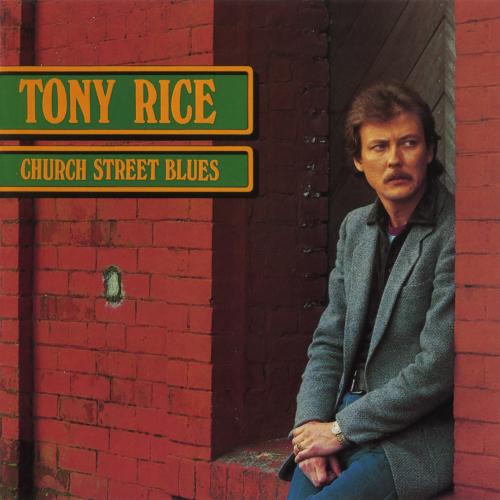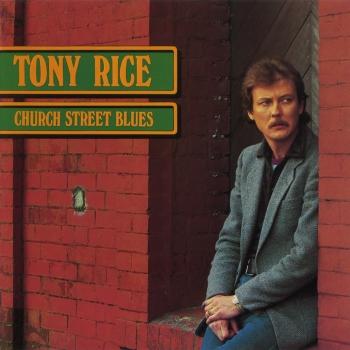
Church Street Blues (Remastered 2024) Tony Rice
Album info
Album-Release:
1983
HRA-Release:
05.04.2024
Album including Album cover
I`m sorry!
Dear HIGHRESAUDIO Visitor,
due to territorial constraints and also different releases dates in each country you currently can`t purchase this album. We are updating our release dates twice a week. So, please feel free to check from time-to-time, if the album is available for your country.
We suggest, that you bookmark the album and use our Short List function.
Thank you for your understanding and patience.
Yours sincerely, HIGHRESAUDIO
- 1 Church Street Blues (Remastered 2024) 03:08
- 2 Cattle In The Cane (Remastered 2024) 01:56
- 3 Streets Of London (Remastered 2024) 04:01
- 4 One More Night (Remastered 2024) 02:15
- 5 The Gold Rush (Remastered 2024) 02:18
- 6 Any Old Time (Remastered 2024) 02:39
- 7 Orphan Annie (Remastered 2024) 02:51
- 8 House Carpenter (Remastered 2024) 04:28
- 9 Jerusalem Ridge (Remastered 2024) 03:27
- 10 Last Thing On My Mind (Remastered 2024) 03:18
- 11 Pride Of Man (Remastered 2024) 02:22
Info for Church Street Blues (Remastered 2024)
"Church Street Blues" is the 1983 album from bluegrass legend Tony Rice. Featuring Rice alone on all but four tracks, the album showcases his guitar prowess and eclectic musical style. Church Street Blues includes standards as well as covers from Bob Dylan, Gordon Lightfoot and more. Noting the album’s intimacy, Bluegrass Today wrote “It’s like you become closer to Rice as a person with every note that is sung or played.”
The album finds the Grammy Award-winning guitarist, singer and songwriter interpreting an eclectic selection of modern and traditional folk songs, including Norman Blake’s “Church Street Blues,” Tom Paxton’s “Last Thing on My Mind” and Bob Dylan’s “One More Night.” An intimate, largely solo outing, Church Street Blues showcases Rice’s prowess on the guitar, as well as his versatility as a performer.
One of the most revered names in bluegrass, Tony Rice (1951–2020) shaped the sound of the genre during his lengthy career, while his distinctive touch on the guitar influenced countless others.
Born in Virginia and raised in Los Angeles, Rice launched his career in Louisville, KY, where he became the lead vocalist and guitarist of J.D. Crowe’s legendary bluegrass group, The New South. In the mid-’70s, not long after the release of their self-titled bestseller (featuring Jerry Douglas and Ricky Skaggs), Rice returned to California to join David Grisman’s esteemed quintet. Working alongside the celebrated mandolinist, Rice broadened his musical palate—exploring jazz, classical and other styles—while honing his technique on the guitar.
This prolific period also found Rice embarking on a variety of collaborative projects, including co-founding the supergroup Bluegrass Album Band alongside J.D. Crowe, Bobby Hicks, Todd Phillips and Doyle Lawson, and forming The Tony Rice Unit. Rice’s solo endeavors, meanwhile, often served as an outlet for the musician to record material outside of the bluegrass sphere.
His fourth solo album, 1983’s Church Street Blues, found Rice interpreting some of his favorite folk songs. Recorded in Berkeley, CA, the album was an intimate affair, featuring the artist and his guitar—joined only by his brother, guitarist Wyatt Rice, on four of the 12 tracks.
In assembling the record, Rice selected a blend of traditional material (“Cattle in the Cane,” “House Carpenter”) with contemporary compositions, including those by Jimmie Rodgers (“Any Old Time”), Bob Dylan (“One More Night”), Ralph McTell (“Streets of London”) and Tom Paxton (“Last Thing on My Mind”).
Other highlights include Rice’s expressive renditions of Hamilton Camp’s oft-covered “Pride of Man,” while he pays homage to his bluegrass roots with a lively cover of the Bill Monroe/Byron Berline-penned “The Gold Rush” (a standout instrumental performance which showcased his dexterity on the guitar). The album also features two songs by Rice’s friend and collaborator, Norman Blake: “Orphan Annie” and “Church Street Blues”—both of which find the artist at his finest.
Upon its release in 1983 (via Sugar Hill Records), Church Street Blues became an immediate fan-favorite, while today, it remains a classic title in Rice’s prolific discography. Writing of Church Street Blues in 2022, Bluegrass Today declared the album “his finest and most definitive work,” while, in an earlier profile, the outlet praised, “the recording’s intimacy…It’s like you become closer to Rice as a person with every note that is sung or played.”
Hailed by Ricky Skaggs as “The single most influential acoustic guitar player in the last 50 years,” Tony Rice remained active for the next three decades, releasing more than a dozen albums under his own name and more than two dozen collaborative titles, including those with The Rice Brothers, Jerry Garcia, the Bluegrass Album Band and Norman Blake.
Throughout his career, Tony Rice was also a sought-after session musician, who appeared on recordings by Mary Chapin Carpenter, Béla Fleck and Emmylou Harris, among many others. A Grammy Award-winner and multiple IBMA recipient, Rice delivered his final public performance in 2013, during his induction into the International Bluegrass Music Hall of Fame.
Tony Rice, guitar, vocals
Wyatt Rice, guitar
Digitally remastered
Tony Rice
was born in Danville, Virginia, on June 8, 1951. In his infancy, the family headed west to Los Angeles where Tony’s earliest musical memory is the guitar playing of his uncle, Hal Poindexter, who played in the Golden State Boys. The band, headed by Tony’s guitar and mandolin-playing father Herbert Rice, also included uncles Walter Poindexter on banjo and Leon Poindexter on bass.
Tony started out learning to play mandolin but soon switched to guitar. He made his performing debut at age nine when he sang “Under Your Spell Again” on the Town Hallradio show. It was here that he met the Kentucky Colonels and their lead guitarist, Clarence White, who would have a profound impact on his playing. Shortly after, Tony played in a group with his brothers Larry on mandolin and Ronnie on bass, plus banjo player Andy Evans. The youngsters played a number of California venues including the Ash Grove and Troubadour nightclubs and Disneyland.
The pursuit of work created somewhat of a transient lifestyle for the Rice family and Tony’s teenage years found them living in Florida, Georgia, Texas, and North Carolina. In 1970 Tony attended Carlton Haney’s festival in Reidsville, North Carolina, where he met and joined the Bluegrass Alliance, taking the place of exiting guitar wizard, Dan Crary. Tony had previously performed as a rhythm player, while developing his lead guitar work in private. Through the Alliance, Tony came in contact with Sam Bush, another musician who shared his now widening eclectic tastes in music.
After a year with the Bluegrass Alliance, Tony left to begin a four-year stint with J.D. Crowe, whose group already included Tony’s older brother Larry. Tony credits Crowe for teaching him to play perfectly in time and with soul, to hit his notes clearly and cleanly, and how to use the guitar efficiently. Crowe’s group maintained a busy schedule, playing six nights a week with amplified instruments in hotel lounges in the Lexington, Kentucky, area. During the summer they hit the bluegrass festival circuit.
By 1975, with Ricky Skaggs a new member, the band was all-acoustic when the landmark album J.D. Crowe and the New South was released. Rounder 0044, as it has come to be known, set the tone for contemporary bluegrass for much of the next decade and beyond. Tony contributed some of the album’s most successful material, including “Old Home Place,” “You Are What I Am,” “Ten Degrees and Getting Colder,” and “Summer Wages.” He earned high marks for his vocals, which by now were as compelling as his instrumental work.
In 1975, Tony headed back to California to become a member of the David Grisman Quintet. The outfit was described as a combination of Miles Davis, Bill Monroe, Django Reinhart, and more. As a member of this group Tony was able to explore more deeply his interest in jazz. Tony’s playing by this time was a combination of flatpicking, crosspicking, and harmonic intervals. He released three solo recordings in the 1970s. Guitar andCalifornia Autumn included members of the Crowe band. The self-titled Tony Rice featured members of the Grisman Quintet, fiddler Richard Greene, and others. At the end of the decade the albums Manzanita and Acoustics heralded the formation of the Tony Rice Unit.
As he continued to explore new avenues of playing, which eventually morphed into a style he called “spacegrass,” Tony also embarked on a project that paid homage to the roots of bluegrass. In 1981, along with J.D. Crowe, Doyle Lawson, Bobby Hicks, and Todd Phillips, he formed a recording supergroup, which came to be known as the Bluegrass Album Band. The Bluegrass Album featured stellar renderings of classics originally recorded some twenty-five to thirty years earlier by Bill Monroe, Flatt and Scruggs, and Jimmy Martin. Over a fifteen-year period, six volumes were issued. All met with critical acclaim and were among the bluegrass genre’s best sellers.
The decade of the 1980s was a good one for Tony. It began with a widely acclaimed duet album with fellow Crowe alumnus Ricky Skaggs, recreating classic bluegrass and old-time duets. Following were four Bluegrass Album Band projects, four Tony Rice Unit recordings (Mar West, Still Inside, Backwaters, and a compilation disc called Devlin), a pairing with guitar legend Norman Blake, and a project titled The Rice Brothers that brought Tony back together with brothers Larry, Wyatt, and Ron. Church Street Blues featured just Tony and his guitar and vocals. With additional releases, Cold on the Shoulder, Me and My Guitar,Native American, and Tony Rice Plays and Sings Bluegrass, Tony became one of the most widely recorded artists in bluegrass.
In the ‘90s, the International Bluegrass Music Awards were initiated to recognize artists’ current popularity. The first program, in 1990, recognized Tony and the Bluegrass Album Band as Instrumental Group of the Year and Tony was honored with Guitar Player of the Year. He went on to win the Guitar Player award four more times in the 1990s. The Tony Rice Unit received the Instrumental Group of the Year Award in 1991 and 1995. Instrumental Recording of the Year awards went to Blake & Rice 2 in 1991 and to Bluegrass Album Band, Volume 6 in 1996.
Although the 1990s were marked by numerous awards and a multitude of CD releases, the era was noted for a forced change in the direction of Tony’s music. Early in the decade he was diagnosed with a muscle tension dysphonia, a condition that affected his vocal chords. Tony’s last performance as a singer took place in 1994. He continues to be highly regarded as an instrumentalist.
With the start of the new millennium, Tony began to relax the frenetic pace of his recorded output. The Tony Rice Unit released two projects, Unit of Measure and Acoustic Swing. A recording that was produced in 1993 with David Grisman and Jerry Garcia finally saw the light of day in 2000 as The Pizza Tapes. Tony and Larry Rice, Chris Hillman and Herb Pedersen teamed for a second time, and a pair of releases showcased the talents of Tony with Peter Rowan. Despite his reduced public appearances, Tony picked up the 2007 IBMA award for Guitar Player of the Year.
In addition to the vast number of albums and CDs he has recorded over the years, Tony has appeared on several performance and instructional videos and DVDs. The authorized biography Still Inside: The Tony Rice Story by Tim Stafford and Caroline Wright was released in 2010. It offered an in-depth account of Tony’s award-winning life in bluegrass and beyond.– Gary Reid is a bluegrass music historian, journalist, producer, and actor based in Roanoke, Virginia. (Source: bluegrasshall.org)
This album contains no booklet.











